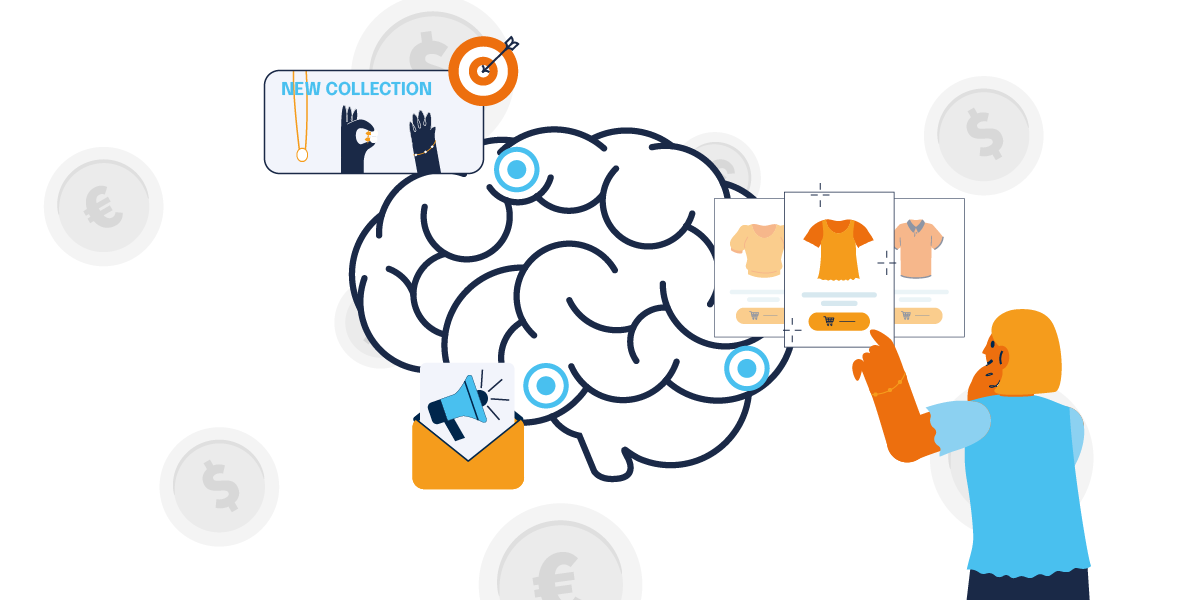In the dynamic world of e-commerce, improving user experience and driving conversion rates are ongoing goals. One psychological theory that has proven particularly powerful in achieving these goals is the mere exposure effect. By utilizing this effect, companies offering onsite personalization can strengthen customer loyalty and drive sales. But what exactly is the mere exposure effect, and how can it be effectively applied in e-commerce?
a
Understanding the Mere Exposure Effect
The mere exposure effect refers to the tendency for people to develop a preference for things they encounter frequently. This phenomenon was first identified by American psychologist Robert Zajonc in the 1960s through a series of experiments. Zajonc demonstrated that repeated exposure to a stimulus – whether an image, sound, or word – leads people to view it more favorably.
This principle applies not just to simple stimuli, but also to more complex preferences, such as those for certain brands or products. In essence, the mere exposure effect suggests that we are more likely to favor the familiar over the unfamiliar. This insight is particularly valuable for companies looking to engage customers across multiple channels, including social media, websites, or OOH advertising.
a
Applying the Mere Exposure Effect in E-commerce
How can the mere exposure effect be effectively applied to boost your marketing efforts? Here are some strategies your company can use to take advantage of this psychological approach:
a
1. Personalized Product Recommendations
Leveraging personalized product recommendations is a powerful way to harness the mere exposure effect. By consistently presenting customers with products similar to those they’ve previously interacted with, companies can increase the likelihood of these products being preferred and purchased. Self-learning algorithms can be employed to generate these recommendations automatically, aligning them with each user’s individual tastes.
a
2. Targeted Banner Ads
Targeted banner ads, aligned with users’ interests and browsing behaviors, can also amplify the mere exposure effect. By frequently displaying ads for products or services that users have already shown interest in, your company can raise awareness and increase the likelihood of a purchase. This strategy is also effective for new users who encounter your ads repeatedly across social media or billboards.
a
3. Consistent Visual Elements
Visual consistency plays a crucial role in leveraging the mere exposure effect. Recurrent visual elements, such as a specific color scheme or brand logo, foster familiarity and strengthen brand recognition. In e-commerce, consistently applying a particular visual style and layout across your website and marketing materials can build customer trust and recognition.
a
4. Email Marketing
The mere exposure effect can also be successfully utilized in email marketing. By steadily sending personalized email campaigns, your company can keep customers engaged with relevant content and offers. Regularly presenting familiar products or content to recipients through emails can foster brand loyalty.
a
Conclusion: The Mere Exposure Effect as a Catalyst for E-commerce Success
The mere exposure effect is a psychological principle that can significantly influence customer behavior. By strategically applying this phenomenon, your company can increase awareness and preference for your products and brands, ultimately driving higher conversion rates. Whether through personalized recommendations, targeted banner ads, or consistent email marketing, the key is to continuously engage your customers with relevant and familiar content. For long-term success, incorporating the mere exposure effect into your strategy can be transformative.
a
